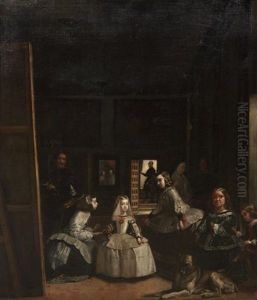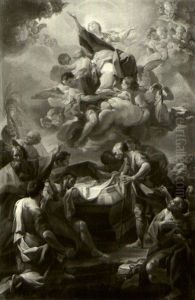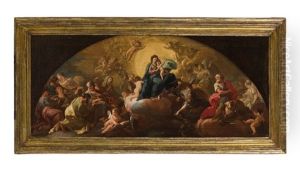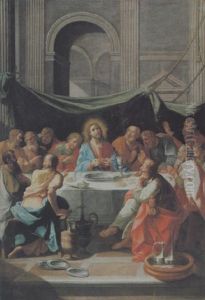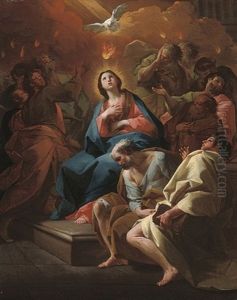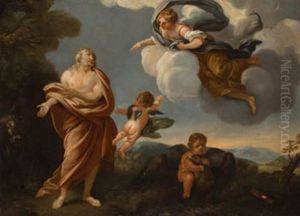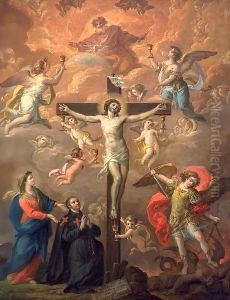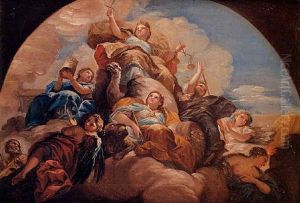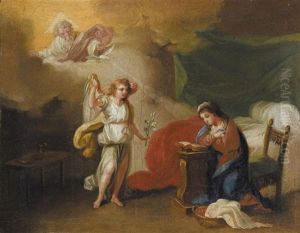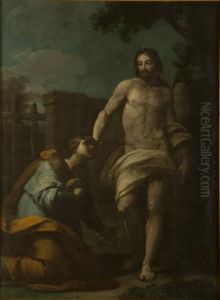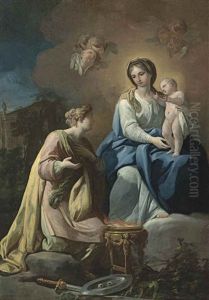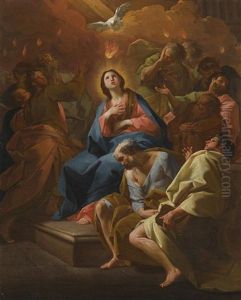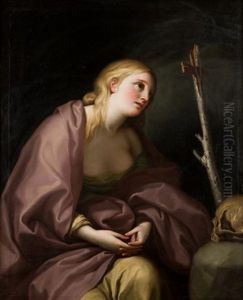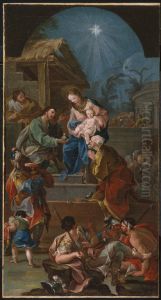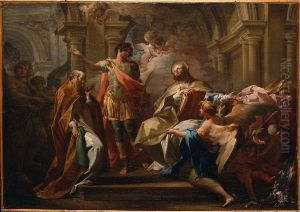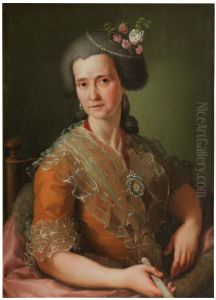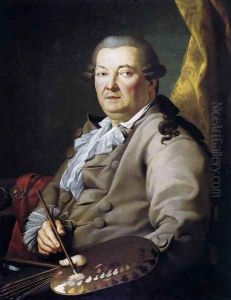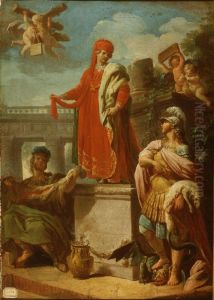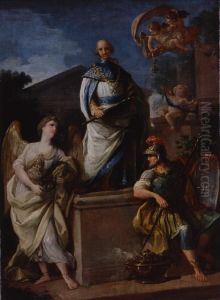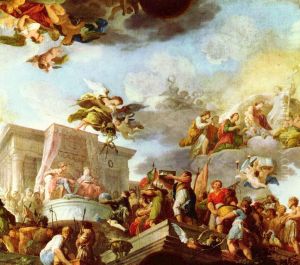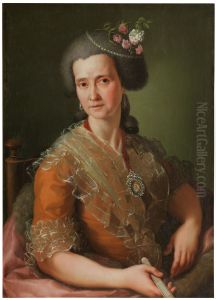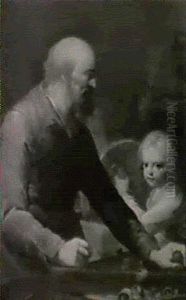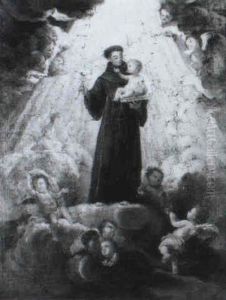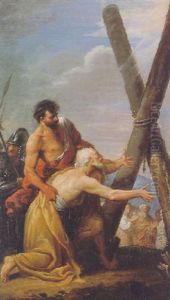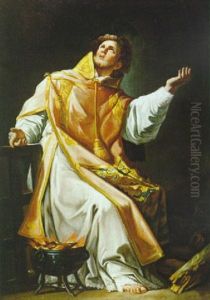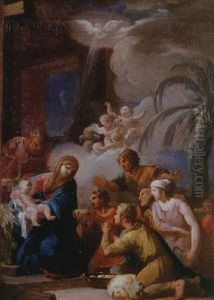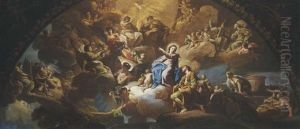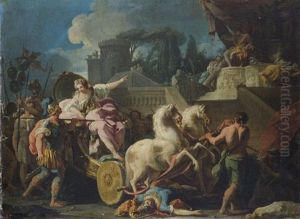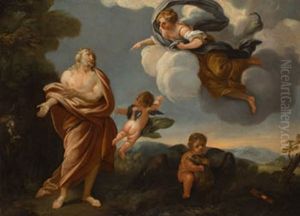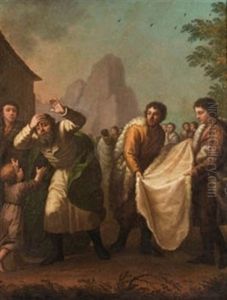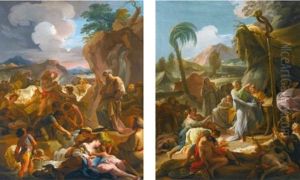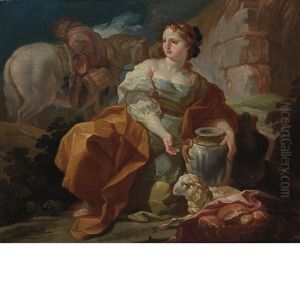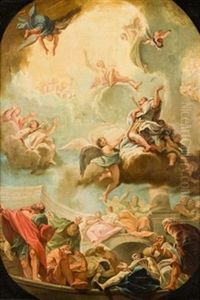Antonio Gonzalez Velazquez Paintings
Antonio González Velázquez was a prominent Spanish painter, born on December 5, 1723, in Madrid. He was part of a family deeply involved in the arts; his father Pablo González Velázquez and his brothers Alejandro and Luis were also accomplished painters. Antonio was a central figure in the late Baroque and early Neoclassical periods in Spanish art, and he played a significant role in the transition between these two styles.
González Velázquez's training began under the guidance of his father and was later augmented by his studies at the Royal Academy of Fine Arts of San Fernando, where he honed his skills and absorbed the principles of Neoclassicism. He became a professor at the Academy and eventually rose to the position of director. His work as an educator and administrator helped to shape the course of Spanish art during a period of transition and set the stage for the acceptance of Neoclassical aesthetics.
As a painter, González Velázquez was known for his religious compositions, mythological scenes, and portraits. His style was characterized by a refined use of color and a mastery of chiaroscuro, which he used to great effect to create depth and drama in his works. His paintings can be found in various churches and palaces throughout Spain, including the Royal Palace of Madrid and the Basilica of San Francisco el Grande.
Antonio González Velázquez's influence extended beyond his paintings. He was involved in the decoration of the Royal Palace of Madrid and worked on the frescoes at the Church of San Antonio de los Alemanes and the Basilica of San Francisco el Grande in Madrid, where his contributions helped to set a precedent for the grandeur of Spanish ecclesiastical art.
González Velázquez's career was marked by recognition and success. He was appointed Painter to the King for King Charles III of Spain and received numerous commissions from the Spanish crown and the church. His legacy is that of a bridging figure between the Baroque sensibilities of his predecessors and the emerging Neoclassical style that would dominate European art in the late 18th century.
Antonio González Velázquez died on April 15, 1793, in Madrid. His body of work remains a testament to his skill and an important part of the history of Spanish art. Despite being somewhat overshadowed by his more famous contemporaries and successors, his contributions to the development of Spanish painting and his role in the artistic institutions of his time ensure that he is remembered as a key figure in the Spanish Enlightenment.
